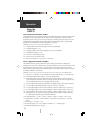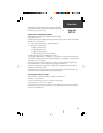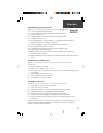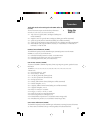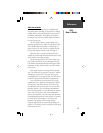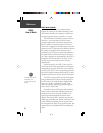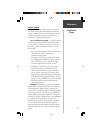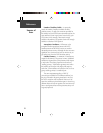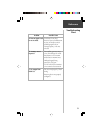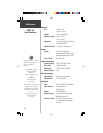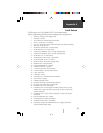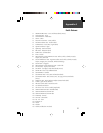
20
DGPS:
How It Works
DGPS: How It Works
Differential GPS (DGPS) is a technique used to
improve the accuracy of the Global Positioning System.
DGPS reduces the effects of ionospheric variations and
can improve position accuracy typically to 1-5 meters.
The DGPS Beacon Transmitter is placed at a known
location (i.e., the exact position of the site has been
previously determined). At the beacon transmitter site,
the GPS satellites are monitored using a GPS receiver.
This receiver is equipped to calculate corrections for each
satellite received. The correction is the difference between
the distance to the satellite (from the beacon site) as
measured by the GPS receiver, and the actual distance to
the satellite based on the known location of the beacon
site. These corrections are communicated to the DGPS 53
through the DGPS Beacon Station. The DGPS 53 then
uses the corrections to remove errors from its own
measurements.
Satellites received by the DGPS 53, but not by the
GPS receiver at the beacon transmitter site, will not have
corresponding corrections. When four or more satellites
received by the DGPS 53 have corresponding corrections,
the result is a highly accurate position reading. The more
satellites with corrections, the more accurate the position.
The DGPS 53 receives RTCM SC-104 format signals
from ground based DGPS Beacon Stations operating in
the 283.5 kHz to 325.0 kHz frequency band and data
rates of 25, 50, 100, or 200 bits per second. These
stations are typically operated by government agencies
such as the U.S. Coast Guard.
Generally, the closest DGPS station will provide the
most accurate correction data. Individual stations vary
and the user may wish to verify the suitability of the
signal for the intended application with the station
operator. The station power is normally set to provide a
usable range somewhere near 300 km. Other factors such
as local interference, lightning, time of day and season,
and if the path to the station is over ground or water, and
antenna selection or installation affect the usable signal
range.
Reference
The DGPS 53 has the GPS
and DGPS receivers
combined within the same
housing.



